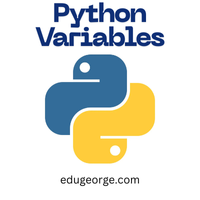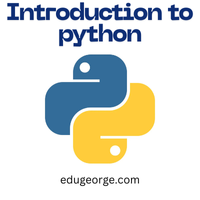PYTHON is a high level programming language, interpreted and versatile. It is very easy to read and learn. Python programming language is one of the easiest programming language you can ever come across in the field.
Who created Python?
It was created by a man called Guido van Rossum.
It was first released in 1991.
Just like the name python, it is user-friendly and broadly used in various fields:
- Web development
- Game Development
- Artificial intelligence and machine learning
- Automation/scripting
- Data analysis and science
- Desktop GUI applications
- Data science
- Embedded systems
Python emphasizes code clarity with its straightforward syntax, making it a popular choice for beginners and experienced developers alike.
Features of Python Programming Language
Python has so many features but we’ll list out the common and basic ones:
- Easy to Learn: The python language has very simple and clean syntax which makes it very easy to understand and learn.
- The python language is already interpreted which makes the code run directly, which makes debugging easier. Python code is executed line by line, no compilation required.
- Cross-Platform: Python works and runs on Windows, Linux, macOS and many other platforms without needing any important change in the code.
- Versatile: The language supports procedural, object-oriented and functional programming.
- Python language is sensitive to indentation.
HOW TO DOWNLOAD AND SETUP PYTHON ON YOUR COMPUTER SYSTEM
- Download and install Python from the official website. Click here to download
- Choose a text editor or Integrated Development Environment (IDE) like PyCharm, Visual Studio code, Sublime Text, etc.
- Download and install any text editor of your choice or from the above listed.
- After installing, download and install the python extension from the text editor that you installed
- You can begin to write your python code.
Write, Print(“Hello World!”), run the code and officially your now a python programmer.
EXAMPLE CODE:
Here is a simple Python program that calculates the factorial of a number:
def factorial(n):
if n == 0 or n == 1:
return 1
else:
return n * factorial(n – 1)# Example usage
number = int(input(“Enter a number: “))
print(f”The factorial of {number} is {factorial(number)}”)
You can copy the above code and paste into your python text editor and see how the code runs.
Read our next posts for more problem solving python codes😊💙






